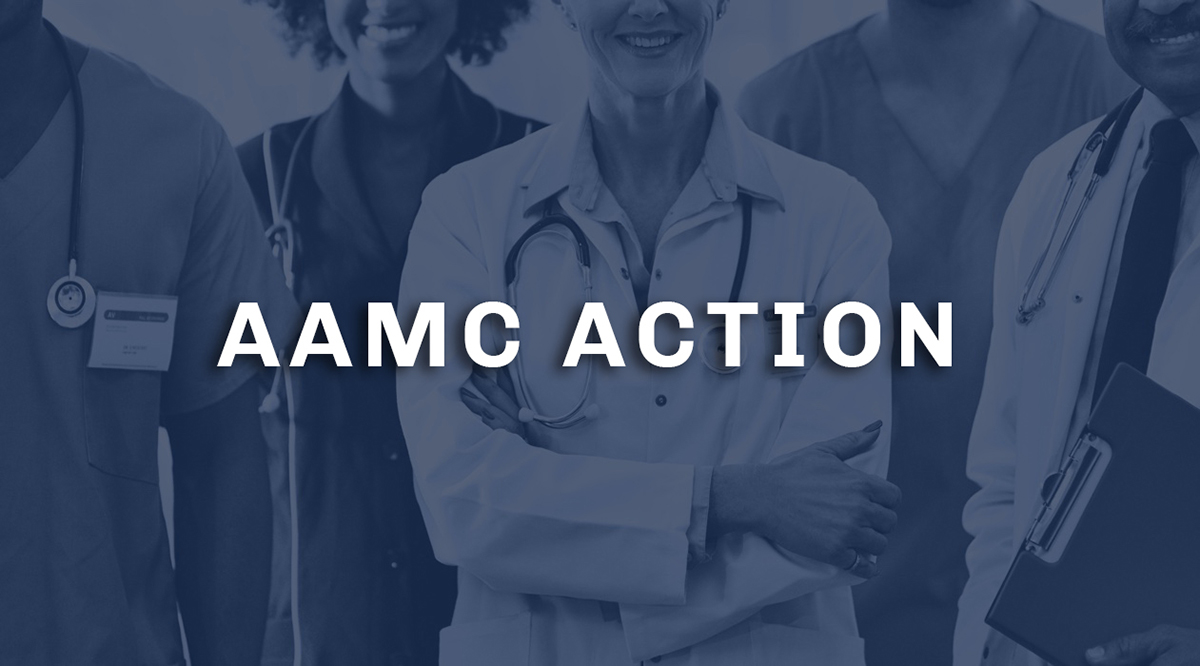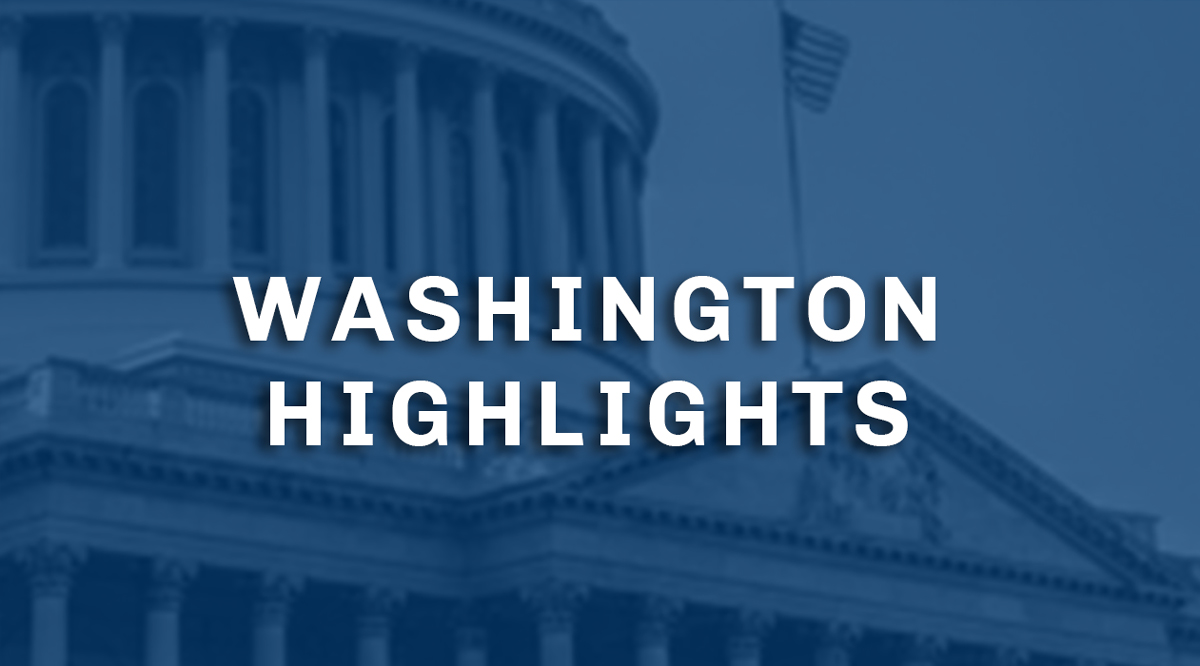Investing in Healthier Communities

Academic medical centers serve at the crossroads of community health, health equity, and population health and are actively working to prevent and address persistent public health challenges, such as gun violence, maternal mortality, substance use disorders, and mental health concerns.
Throughout our history, structural racism and inherent biases have created health inequities that impact minority communities and other marginalized groups, who have borne the greatest burden of health insecurity. The COVID-19 pandemic has laid bare these existing health inequities, taking a disproportionate toll on marginalized people and communities throughout the nation. Medical schools, teaching physicians, and teaching hospitals play a unique role in fostering and participating in collaborations with community organizations, federal agencies, and other entities to address these challenges — in both times of crisis and on an ongoing basis — to promote health for people everywhere and reduce the inequities that exist between communities nationwide.
Healthier Communities
Health Equity
Medical schools and teaching hospitals continuously work across all of their missions by collaborating with communities to ensure all people have the same opportunities to reach their full health potential — a state of health equity. As pioneers in research and clinical best practices, these institutions create the evidence base that makes the case for policies, partnerships, and practices that facilitate health equity. Diversity and implicit bias training for learners, researchers, and providers; social risk adjustment in screening, referral, and payment; and initiatives to increase diversity in clinical trials can all help improve health outcomes for underrepresented communities.
As anchor institutions, academic medical centers advocate for federal, state, local, and community partnerships to address social factors, such as affordable housing, transportation, access to healthy food, job security, economic inequities, and environmental health.
Equitable data collection that both identifies communities disproportionally at-risk and suggests structural interventions is foundational to ensuring just, equitable preparedness and response to any public health crisis. Race and ethnicity represent only small part of the data collection needed to ensure health equity. Indeed, neither race nor ethnicity are modifiable risk factors. Rather, they are poor proxies for the social risks and social determinants to which communities of color and the residents who live within them are exposed. Beyond sociodemographic data, we need standardized, valid, inclusive data collection on the social needs and social determinants most likely to correlate with increased exposure, susceptibility, and severity of illness and infectious diseases.
Resources
- HPNEC Group Letter on FY 24 Appropriations and Title VII/VIII Funding
- Group Letter Urging Support of Highest Possible Funding for HRSA in FY24
- AAMC Sign On Letter Regarding the Recommendation to Not Designate People with Disabilities as a “Health Disparity Population”
- Group Letter in Support of Extending Mandatory Funding for National Health Service Corp
- Group Letter in Support of CDC Social Determinants of Health Program
- AAMC Endorses the Medical Student Education Authorization Act
- AAMC Center for Health Justice
- AAMC Center for Health Justice Maternal Health Equity Resources
- AAMC Learning Series on Advancing Health Equity Through Telehealth
Addressing Racism in Medicine
Throughout our history, structural racism and inherent biases have created health inequities that impact minority communities and other marginalized groups, who have borne the greatest burden of health insecurity and mistrust. The COVID-19 pandemic has highlighted these existing health inequities, taking a disproportionate toll on marginalized people and communities throughout the nation. Medical schools, teaching physicians, and teaching hospitals play a unique role in fostering and participating in collaborations with community organizations, federal agencies, and other entities to address these challenges — in both times of crisis and on an ongoing basis — to promote health for people everywhere and reduce the inequities that exist between communities nationwide.
Resources:
- Race-Conscious Admissions in Medical Education
- New AAMC Data on Diversity in Medical School Enrollment in 2023
- AAMC Honors Health Care Champions with Inaugural ACE Awards
- AAMC Deeply Disappointed by SCOTUS Decision on Race-Conscious Admissions
- DEI: A Strategic Priority for the AAMC and Academic Medicine
- AAMC Joins 3 Amicus Briefs Opposing State Bans on Gender-Affirming Care
- AAMC Testimony to Senate HELP Committee on Health Workforce Diversity and HBCUs
- AAMC Comments on Revisions to OMB’s Race and Ethnicity Statistical Standards
- AAMC Joins Health Professions Statement on Academic Freedom and DEI
Public Health
To operate most optimally, the nation’s health care system — including teaching hospitals and their affiliated medical school faculty — requires a strong public health infrastructure. Decades of underfunding at the national, state, and local levels, however, have strained foundational public health capabilities, as looming and ongoing threats — such as the COVID-19 pandemic — far outpace available resources. Academic medical centers advocate for health, health equity, and population health and are actively working to prevent and address persistent public health challenges, such as gun violence, maternal mortality, substance use disorders, and mental health concerns.
Resources
- Group Letter Urging Support of at Least $11.581 Billion for CDC in FY25
- AAMC Response to Sen. Cassidy’s RFI on CDC
- Group Letter Urging Senate and House Committees on Appropriations to Support Robust Funding for Community Violence Intervention Initiative at the Centers for Disease Control
- AAMC Letter of Support for Substance Use Disorder Workforce Act
- AAMC Comments to the Office of Research Integrity on its NPRM on Public Health Service Policies on Research Misconduct
- Group Letter in Support of Prevention and Public Health Fund
- AAMC Endorses Public Health Infrastructure Saves Lives Act
- AAMC Comments to DEA on Telemedicine Prescribing Controlled Substances
- AAMC Comments to SAMHSA on Medications for Opioid Use Disorder
- Group Sign on Letter Urging Continued Gun Violence Prevention Funding
Emergency Preparedness
Teaching hospitals and their faculty physicians and staffs are critical to the U.S. health care system’s ability to respond to natural and human-induced disasters and other emergencies. As they have demonstrated during the COVID-19 pandemic, academic medical centers have decades of experience in mobilizing resources during times of crisis and often lead regional responses in collaboration with their state and local health departments, regional emergency management systems, and community partners.
Maintaining emergency preparedness and mounting a robust response require a strong commitment to programs under the Centers for Disease Control and Prevention (CDC) and the HHS Assistant Secretary for Preparedness and Response. The most effective preparedness strategy also requires ongoing, stable financial support for the nation’s core public health and health care infrastructures, including academic medical centers.
Resources
- Group Letter Urging PAHPA Reauthorization
- AAMC responses to House and Senate RFIs on PAHPA reauthorization
- Group Letter Supporting Robust Funding for CDC Advanced Molecular Detection Program
- Group Letter Protecting from Recissions to COVID Relief Funds at CDC
- AAMC Letter to OSTP on Research Infrastructure, Emergency Clinical Trials

We are students, residents, researchers, faculty members, and physicians who advocate on behalf of academic medicine.

Find congressional testimony, letters to Capitol Hill and federal agencies, and comment letters on policy issues.

Washington Highlights provides academic medicine-related news and health policy information from Capitol Hill and the federal agencies.